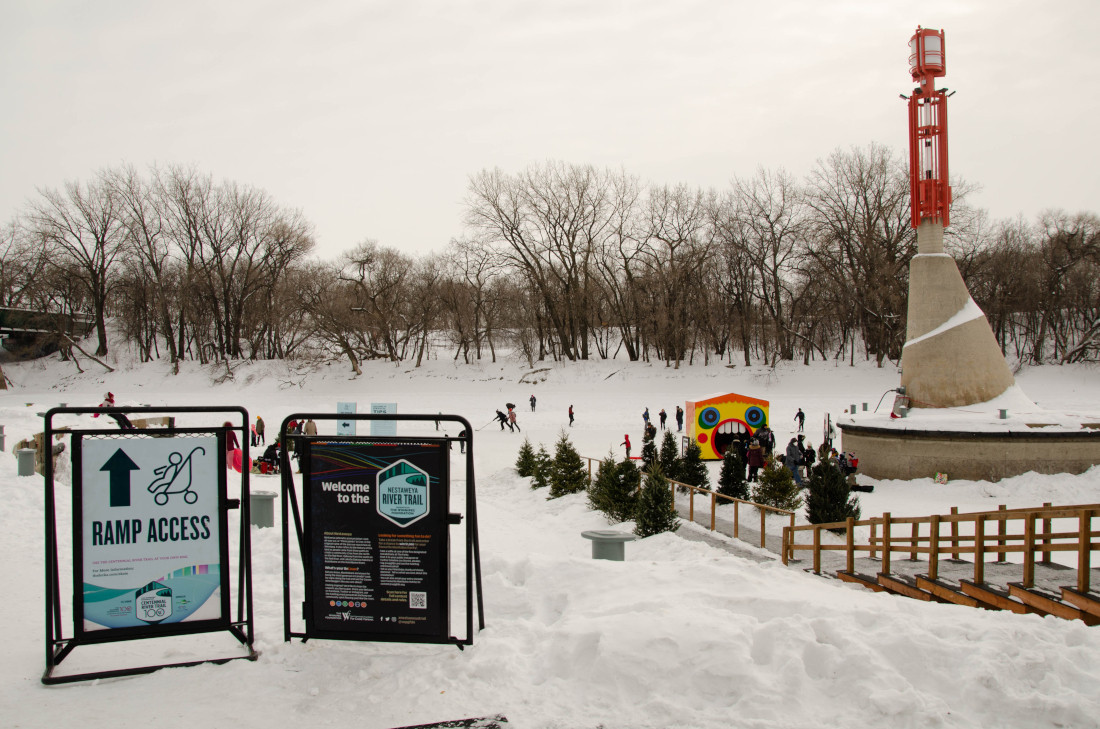Where three points meet
Nestaweya River Trail given original Cree name
The new official name of the Nestaweya River Trail is a nod to the site’s history as an Indigenous meeting place since ancient times. (Photo by Keeley Braunstein-Black)
In recognition of this history, the frozen trail was recently renamed the Nestaweya River Trail and officially opened to visitors on Jan. 24. Nestaweya (pronounced ness-tah-way-ah) is a Cree word meaning “three points,” which refers to the area now known as Winnipeg.
“It’s a way of bringing back the original name of Winnipeg,” Niigaan Sinclair, an associate professor of Native studies at the University of Manitoba, says. “The original name of this place is called three points, talking about the ways people came from three different directions to be here.”
Clare MacKay, the executive director of The Forks Foundation, says the naming of the Nestaweya River Trail was part of a partnership between The Forks and The Winnipeg Foundation to celebrate the latter organization’s centennial anniversary and to honour the history of The Forks and the surrounding areas.
“The Forks has 6,000 years of history of Indigenous people meeting,” MacKay says. “It’s an acknowledgement of the past, and it’s a way to move into the future as well.”
The history of Indigenous peoples meeting in the area that defined Nestaweya is founded on both archeological findings and oral histories passed down through generations, MacKay says.
Sinclair, who is also the Indigenous curator of The Forks, says there was a “permanent settlement of several thousand people that inhabited the space in and around what is now Portage and Main, all the way to Portage and Broadway.”
Today, the river continues to be a beloved meeting spot. In 2008, the trail’s 8.54 km icy stretch won a Guinness World Record for the longest naturally frozen skating trail. It remains in friendly competition with Ottawa’s Rideau Canal Skateway.
“Over the years, our feelings about winter have changed substantially,” MacKay says. “We’ve seen an explosion of interest in winter and people embracing it – so much so that our numbers in January and February are the same as our visitation numbers in July and August, which was not the case 15 years ago.”
Recently, the river trail has garnered appreciation as a safer outdoor meeting place for folks to connect. MacKay says this has increased its popularity.
In addition to the trail renaming, the unveiling of the rainbow butterfly warming hut honours and brings attention to missing and murdered Indigenous women, girls and 2SLBGTQIA+ individuals. The various installations on The Forks grounds are a part of a greater commitment to Indigenizing the space.
“The river trail is one of the most important winter experiences here in the city, and I think it’s important to talk about the history of where we come from and where we’re going,” Sinclair says.
Be it skating, snowshoeing, walking or whatever mode of transportation one takes along the Nestaweya River Trail, the renaming of the frozen path invites visitors to acknowledge the original stewards of the Red and Assiniboine Rivers and contemplate how to move forward.
Published in Volume 76, Number 16 of The Uniter (February 3, 2022)






